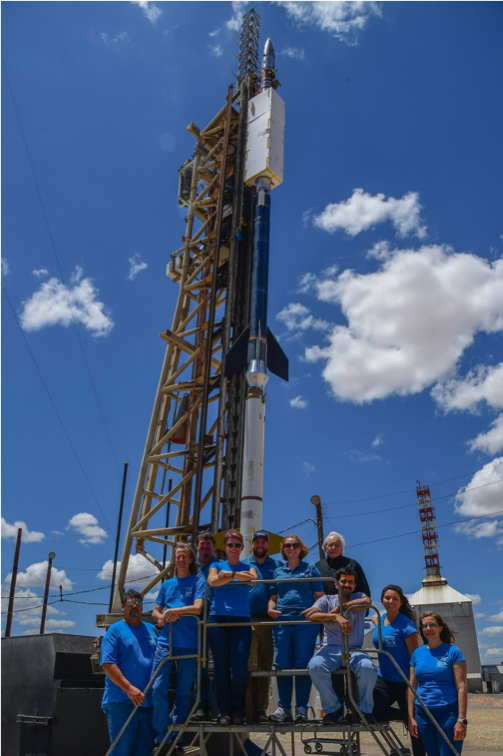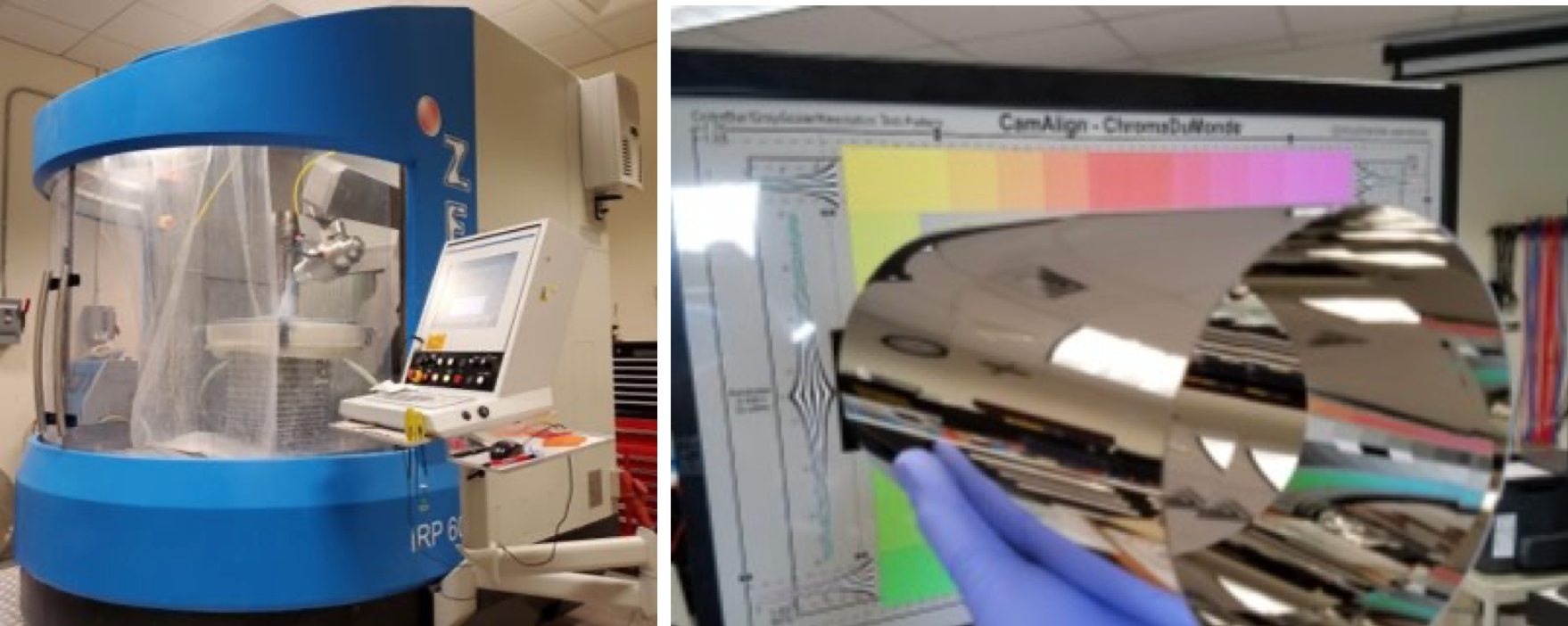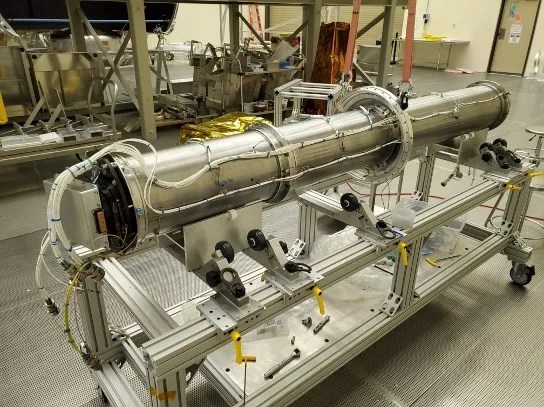6 min read
PROJECT
Marshall Grazing Incidence X-ray Spectrometer (MaGIXS)
SNAPSHOT
NASA has developed a new type of instrument that can provide key information to predict and understand solar flares.

X-ray spectroscopy provides unique capabilities for answering fundamental questions in solar physics and for predicting the onset of energetic events like solar flares or coronal mass ejections, which can impact life on Earth. NASA Marshall Space Flight Center and its partners are developing new instrumentation to make observing the Sun’s X-rays a reality.
The soft X-ray wavelength range is dominated by spectral lines formed by ions that only exist at temperatures from 2-20 million degrees. Observing these spectral lines can yield insights into basic physical processes of the Sun and stars that are not easily accessible by any other means. NASA built the Marshall Grazing Incidence X-ray Spectrometer (MaGIXS) sounding rocket instrument to acquire the first-ever high-resolution spectrally and spatially resolved X-ray observations of the solar atmosphere in the soft X-ray wavelength range. Launched on July 30, 2021, the MaGIXS instrument consists of three grazing incidence mirrors, a diffraction grating, and a low noise detector. Over a decade of technology development funded by NASA’s Heliophysics Technology and Instrument Development for Science (H-TIDeS) and Heliophysics Low Cost Access to Space (H-LCAS) Programs was required to make the MaGIXS flight a success.
In instruments using grazing incidence mirrors, the light skims the mirror surface, like a rock skipping across a pond. These types of mirrors produce X-ray images, but the mirrors themselves are difficult to fabricate. The MaGIXS mirrors were fabricated at MSFC using a new replication process NASA developed that includes unique and customized measurement, data analysis, and machine programing tools. The first step in this process is to super polish a mandrel (an accurate mold) to act as the basis for the mirror. MaGIXS served as a pathfinder for a deterministic, computer numerical control (CNC) polishing process that is specifically tailored to correct errors in the shape of the mandrel and results in high-resolution grazing-incidence mirror mandrels.
This deterministic process utilizes a polishing machine guided by metrological feedback to provide precise polishing control. After the mandrel is polished, a mirror shell is electroformed onto the mandrel. The mirror shell is then separated from the mandrel via differential thermal expansion (i.e., the mandrel and shell are placed in a chilled water bath, and due to the different rates of expansion of the materials used to fabricate the mandrel and mirror, the two pieces separate). MaGIXS demonstrated that this deterministic polishing technique significantly reduced figure errors in the mandrel and produced a mirror with the desired characteristics.

Another key element in the MaGIXS instrument is the diffraction grating, which spreads the incoming X-ray light into its component wavelengths. Diffraction gratings have been used for centuries in spectroscopy and the related technologies are constantly being improved. The MaGIXS team developed advanced techniques to push the boundaries of the technology even farther—in this instance to employ a spacing between grating elements that is a fraction of the wavelength of visible light. MaGIXS uses a blazed grating, meaning that the grating surface resembles a sawtooth pattern with the angles of the surfaces precisely manufactured to produce maximum efficiency in the amount of light sent to the focal plane detector. The main challenges involved in developing this type of grating are to ensure the pattern is smooth at the atomic level so that the X-rays are reflected instead of scattered, and to sharply define the sawtooth surface so that a maximum usable area is produced. To make things more difficult the MaGIXS grating is "chirped"—meaning that the spacing between the steps in the pattern increases along the length of the grating—to improve the resolution of the resulting spectrum at the focal plane.
The MaGIXS optical system includes three mirrors, a grating, and a detector that must be aligned to each other. The positional tolerances for these optic systems are very tight because they all have extremely narrow apertures that must be lined up precisely. Alignment of the optics on the ground prior to flight is also complicated by the fact that the optics operate in X-rays, which do not pass through the atmosphere. To overcome these challenges, the MaGIXS team used alignment tools previously developed for NASA’s Chandra X-ray Observatory and developed new techniques that allowed the different optical components to be aligned using a theodolite.
Another difficulty in developing instruments for sounding rockets is the need to employ low-noise, low-cost camera systems that can survive a rocket launch. The MaGIXS camera is a slightly modified version of the four-channel readout charged-coupled device (CCD) camera developed at MSFC for another sounding rocket instrument. The camera utilizes a Teledyne e2v Technologies back-illuminated CCD that is mechanically masked to expose 1k×2k pixels and uses the remaining 1k×2k pixels as a storage region. The CCD is mounted on a copper block, which is cooled to less than −70°C using a cold strap bundle connecting the CCD block to the thermal reservoir (cold block). The cold block is cooled by a flow of liquid nitrogen from outside the payload until launch. During countdown, a computer monitors the temperature of the CCD and cold block and controls the flow of liquid nitrogen to cool the CCD at a safe, controlled rate.

MaGIXS was launched on July 30, 2021 and successfully observed spatially and spectrally resolved X-ray spectra. MaGIXS captured parts of the two targeted active regions and the team was able to spatially separate several structures. Several high-temperature spectral lines have been positively identified in these regions. MaGIXS team members are currently processing the flight data and expect several science publications to result from this data set.
The MaGIXS instrument was developed in a partnership between NASA Marshall Space Flight Center and the Smithsonian Astrophysical Observatory. Additional partners include Massachusetts Institute of Technology, Izentis LLC, and the University of Central Lancashire.
PROJECT LEAD
Dr. Amy Winebarger, NASA Marshall Space Flight Center
SPONSORING ORGANIZATION
NASA Heliophysics Division’s Heliophysics Low Cost Access to Space (H-LCAS) Program and Marshall Space Flight Center







